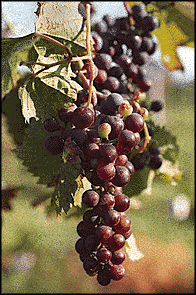Wineries in Iowa.

There are many wineries thriving in Iowa, which is surprising considering that the climate is not exactly conducive to grape growing. The reason that these crops are thriving is due to French-American grape hybrids made to thrive in cold climates. The popularity of this crop change is seen through the fact that seven hundred acres of land compared to fifteen in 2000 are for grape growing. Mr. Olson, owner of The Penoach Winery, will make more money selling grapes off his two acres than he did with 1,000 acres of corn and 3,000 head of hogs. States other than Iowa, such as South Dakota, Indiana, and Ohio are also producing grapes. South Dakota is doubling its number of wineries and Ohio is spending $900,000 to endorse its local wineries. These wineries serve as tourist attractions as well as a profitable business. Mr. Klodd, another winery owner, is astounded that thousands of tourists pay to stomp grapes. After the end of the prohibition, wineries began opening up and haven’t stopped since.
A prohibition is a legal ban on the selling and making of alcohol. In the 1830s, American consumption of alcohol was ten gallons annually. Many groups of people believed this to be a national curse. Abraham Lincoln even said that alcohol was “used by everyone, repudiated by nobody.” Maine passed the first state prohibition law in 1851 and was followed by thirteen other states. This political predicament of alcohol consumption was forgotten with the onset of the American Civil War. The number of saloons rose to one for every four hundred people. National Prohibition began on January 16, 1920. Although the act initially caused more drinking, the annual consumption did fall. By December of 1933, the Prohibition was repealed.

0 Comments:
Post a Comment
<< Home